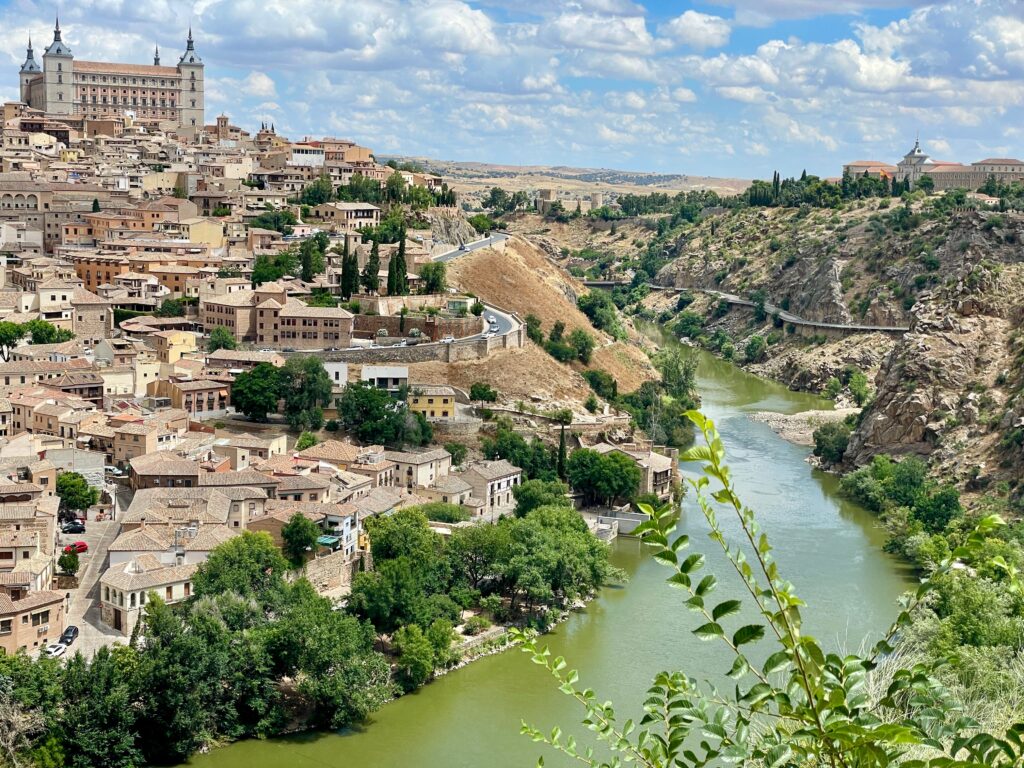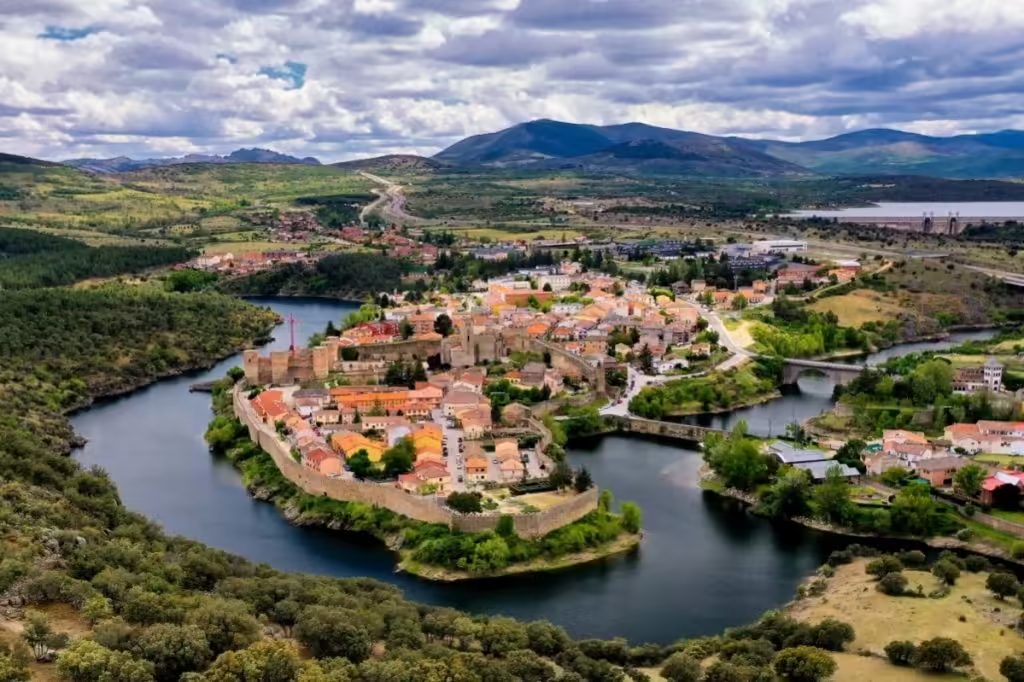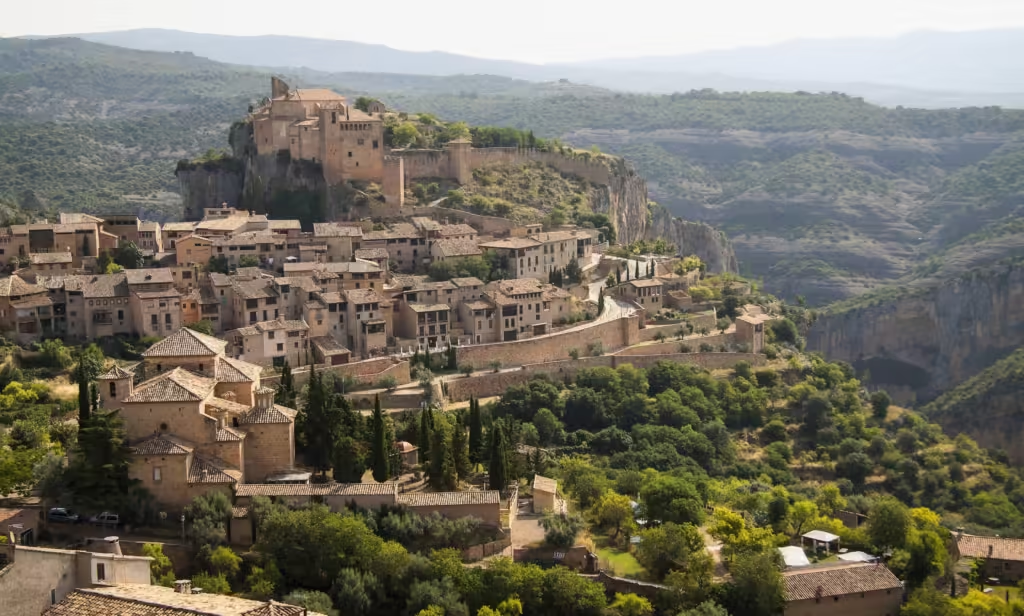Cabañeros National Park is a true gem in the heart of Spain. It sits between the provinces of Ciudad Real and Toledo in the Castilla-La Mancha region. Often referred to as the “Spanish Serengeti,” it boasts exceptional biodiversity and breathtaking landscapes. This unique destination is a haven for wildlife enthusiasts and eco-travelers seeking to experience the best of the Iberian Peninsula’s natural wonders. In this ultimate guide, you will find all the information you need about Cabañeros National Park. You will discover its fascinating history, top activities, places to stay, and insider tips on how to make the most of your visit.

Overview of Cabañeros National Park
A Protected Haven of Mediterranean Forests
Cabañeros National Park protects one of the largest remaining Mediterranean forest ecosystems in Europe. It spans over 40,000 hectares and includes lush woodlands, dehesas (open woodland pastures), and mountain ranges. These diverse habitats are home to more than 200 species of birds and a wide variety of mammals, including deer and wild boars. The forest landscape provides visitors with an unparalleled opportunity to connect with nature in one of Spain’s most significant protected areas.
Rich Biodiversity and Wildlife
This park contains a remarkable variety of flora and fauna. The Mediterranean forest features cork oaks, holm oaks, and strawberry trees, which create a unique habitat for countless species. Large mammals, such as red deer, roam across open meadows known as “rañas,” while smaller creatures take shelter in the dense woodlands. Birdwatchers often spot the Spanish imperial eagle and black vulture soaring overhead. The impressive abundance of birds of prey makes Cabañeros a premier spot for avian observation in Spain.
Historical Background
Cabañeros’ protected status originated in the 1980s. Government efforts prevented the area from becoming a military training ground, a plan that sparked controversy among local communities. Conservationists highlighted the region’s environmental importance and successfully advocated for protection. In 1995, it was officially declared a national park. Since then, park authorities have worked to preserve its ecological balance, protect endangered species, and promote sustainable tourism.
Getting to Cabañeros National Park
Transportation Options
Cabañeros National Park lies roughly 150 kilometers south of Madrid. The easiest way to reach the park is by car, since major highways connect Madrid to the Castilla-La Mancha region. Public transportation from Madrid involves taking a bus or train to nearby towns such as Ciudad Real or Toledo. From there, you can rent a car or arrange a guided excursion to the park. This approach allows more flexibility and ensures you can explore the best sites at your own pace.
Local Tips for Travelers
If you decide to drive, be mindful that some roads inside the park may be unpaved. A vehicle with good ground clearance or an organized 4×4 tour is recommended. Fuel stations in rural areas may be sparse. Fill up before you reach the park to avoid running out of gas in remote locations. Always carry water and snacks, as facilities are limited inside the park boundaries.
When to Visit Cabañeros National Park
Spring Adventures
Spring is a popular season to visit Cabañeros. Temperatures are mild, and wildflowers blanket the meadows in vibrant hues. Many animals become more active as they forage for food. Birdwatchers often spot rare species building nests. The park’s verdant landscapes and moderate weather conditions make spring an ideal time for hiking and taking guided tours.
Summer Activities
Summer in Cabañeros can be quite warm, with temperatures occasionally soaring above 30°C. Early mornings and late afternoons are cooler, allowing visitors to enjoy nature without excessive heat. If you plan to hike during midday, pack plenty of water and wear appropriate sun protection. Many guided tours shift their schedules to avoid peak heat hours. Observing animals near water sources during the hottest hours can still be a unique experience.
Autumn Highlights
Autumn in Cabañeros is known for the bellowing of the deer, a natural spectacle called the “rut.” During this period, male deer compete for mates, and their calls echo through the park. The forest takes on golden tones, and temperatures become more comfortable. Photographers love capturing the contrasting colors of leaves and the drama of wildlife activity. Autumn is also a less-crowded season, making it perfect for travelers seeking a more peaceful trip.
Winter Delights
Cabañeros remains inviting in winter, although it can be chilly and sometimes damp. The crisp air and occasional fog can create eerie yet captivating panoramas. Fewer visitors explore the park during this season, so you can experience solitude amid pristine landscapes. Make sure to pack warm clothing, waterproof boots, and thermal layers. Animal sightings can be rewarding, especially if you visit feeding stations or roam areas known for deer activity.
Top Attractions and Outdoor Activities
Hiking Trails
One of the best ways to immerse yourself in Cabañeros’ natural beauty is by hiking its many trails. Routes range from easy walks to challenging treks that traverse mountain paths. Popular routes include the Sierra de Castellar trail, which offers panoramic views of the park’s valleys. Another notable hike is the Gargantilla route, where you can see waterfalls and streams surrounded by lush vegetation. Remember to carry a map, wear sturdy footwear, and follow park regulations at all times.
Birdwatching Opportunities
Cabañeros National Park is often called a birder’s paradise. Iconic raptors such as the Spanish imperial eagle and black vulture can be seen soaring above the cliffs. You may also spot golden eagles, booted eagles, and griffon vultures. The wetlands and riverbanks attract numerous waterbirds, making the park a prime location for diverse avian encounters. Bringing a high-quality pair of binoculars enhances your viewing experience.
4×4 Safari Tours
Many visitors opt for guided 4×4 safari tours, which venture into remote areas of the park. Expert guides help spot wildlife while sharing interesting facts about local ecology and conservation efforts. These safaris often visit the “rañas,” the wide-open meadows where deer graze and feed. Observing herds of deer against the backdrop of Cabañeros’ rolling hills is an unforgettable sight. Make sure to book a tour in advance, especially during peak seasons like spring and autumn.
Other Outdoor Pursuits
Beyond hiking and wildlife spotting, Cabañeros offers several additional activities for nature lovers. Mountain biking trails wind through forested areas and open fields, providing exhilarating rides for cyclists. Photographers can set up in designated hides for a chance at close-up shots of iconic species. Nature photography workshops are sometimes available, led by local experts. Kayaking can also be arranged in some nearby reservoirs, though it is less common than hiking or 4×4 tours.
Where to Stay in and Around Cabañeros National Park
Rural Accommodation
Rural cottages, known as casas rurales, provide a cozy and authentic Spanish experience. These properties are typically family-owned and offer amenities such as fireplaces, communal kitchens, and outdoor spaces for stargazing. Staying in a rural cottage allows you to wake up in nature’s embrace, with the sounds of birds welcoming the day.
Hotels and Guesthouses
Small hotels and guesthouses are located in towns on the outskirts of Cabañeros. They cater to visitors seeking more conventional lodging options without sacrificing proximity to the park. Many of these establishments have partnerships with local guides and tour operators. Guests often benefit from special packages that include transportation, meals, and guided excursions. Opting for these deals can simplify logistics and enhance your overall experience.
Camping Options
For those who prefer sleeping under the stars, there are campgrounds and designated camping areas. This approach immerses you in the park’s ecosystem around the clock. Remember to follow leave-no-trace principles to help preserve Cabañeros’ fragile habitats. Fire regulations are strict, especially during the hot summer months. Always check current guidelines and restrictions at the park’s official information center before setting up camp.
Savoring Local Cuisine and Gastronomy
Traditional Dishes
Castilla-La Mancha cuisine is known for hearty stews and rustic flavors. Dishes such as migas (fried breadcrumbs with garlic, chorizo, and peppers) and pisto manchego (a vegetable stew similar to ratatouille) are common in this region. When visiting small villages near the park, you’ll find restaurants serving local specialties made with fresh, seasonal ingredients.
Local Delicacies
Game meats like venison or wild boar are often featured on menus. These options reflect the hunting traditions of the area. Pair these dishes with local wines from nearby vineyards. The region is recognized for producing robust, full-bodied reds that complement these strong flavors. Don’t forget to try manchego cheese, one of Spain’s most famous and beloved cheeses.
Conservation Efforts and Sustainable Tourism
Park Management
Cabañeros National Park is managed by Spanish environmental authorities who collaborate with scientists, park rangers, and local organizations. Their goal is to protect endangered species, conserve habitats, and promote public awareness. Research on habitat restoration and species population dynamics plays a vital role in shaping the park’s management strategies. Through consistent monitoring, authorities ensure that Cabañeros remains a beacon of biodiversity for future generations.
Visitor Guidelines
Visitors are asked to adhere to simple rules that minimize human impact. Staying on marked trails preserves fragile soils and plant life. Carrying out all trash and respecting wildlife by keeping a safe distance are equally important. Park rangers often patrol the area to enforce regulations, offer guidance, and assist travelers. By following these guidelines, you help maintain the delicate balance of this priceless ecosystem.
Frequently Asked Questions
What Is the Best Time to Visit Cabañeros National Park?
Spring and autumn are generally considered the best times to visit. In spring, mild temperatures and blooming wildflowers enhance the scenery. Autumn features the deer rut, a natural spectacle marked by the distinctive calls of male deer.
Is Cabañeros Safe for Families with Children?
Yes. Most trails are well-marked, and local guides offer family-friendly tours. Bring sufficient water and snacks, and watch children closely while hiking. Many families find Cabañeros a fun and educational destination.
Are There Visitor Facilities in the Park?
Yes. There are information centers, rest areas, and picnic spots in certain sections of the park. However, these facilities might be limited in more remote zones, so plan accordingly. Check the official park website or contact park offices for the latest updates.
Do I Need a Ticket to Enter Cabañeros National Park?
Generally, entry is free for individual visitors exploring on foot. Guided tours and certain activities may require fees. Some special observation areas or specific routes might also require permits. Always verify current regulations and booking procedures before your trip.
Final Thoughts on Visiting Cabañeros National Park
Cabañeros National Park stands out as one of Spain’s best-kept secrets. Its diverse landscapes, wide variety of wildlife, and rich cultural heritage create an unforgettable experience. From easy nature walks to thrilling 4×4 safaris, there are activities suitable for everyone. The park’s commitment to conservation ensures future generations can enjoy this precious slice of wilderness. Whether you are a devoted birder, a casual hiker, or a curious traveler, Cabañeros will captivate you. Plan your visit soon, and discover why so many people fall in love with this magnificent corner of Castilla-La Mancha.
Embrace nature, support local communities, and remember to tread lightly on this fragile land. Cabañeros National Park offers you the chance to reconnect with the wild. Your journey here will create memories that last a lifetime.

